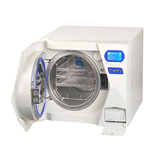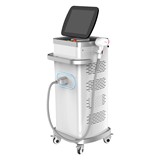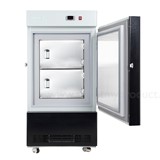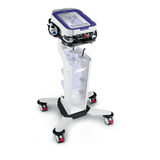Explore the best laser tattoo removal machines in Australia. Learn about pricing, types, and key considerations before making your purchase decision.
Key Takeaways
- Laser Types: The two primary types of lasers used for tattoo removal are Q-switched lasers and picosecond lasers. Each offers unique benefits for different ink colours and tattoo types.
- Price Range: Laser tattoo removal machines in Australia can range from $20,000 to $100,000, depending on the machine’s technology and capabilities.
- Ongoing Costs: Operational costs, including maintenance, consumables, and energy consumption, can range from $1,000 to $5,000 annually.
- Financing: Financing options allow you to cover up to 100% of the purchase price, with interest rates between 5% to 10% per year.
- Compliance: All tattoo removal machines must meet safety and radiation standards under Australian regulations, including ARPANSA certifications.
Introduction
Laser tattoo removal is an in-demand service across Australia, increasingly sought after by both medical clinics and beauty specialists. As the tattoo removal industry continues to grow, understanding the types of lasers, their pricing, maintenance, and regulatory requirements is essential when choosing the right equipment for your practice. Whether you're a clinic expanding your services or an entrepreneur entering the industry, this guide covers everything you need to know—from choosing the right machine to understanding ongoing costs, financing options, and key compliance considerations to ensure a safe and profitable investment.
Types of Laser Tattoo Removal Machines
When purchasing a laser tattoo removal machine, it’s important to choose a machine that fits your clinic’s needs, based on tattoo type, volume, and budget. Below are the most commonly used machines in the industry.
Q-Switched Lasers
- How It Works: Q-switched lasers deliver short bursts of high-intensity light to break down the ink in tattoos. This laser is particularly effective for darker tattoo inks.
- Best For: Black, blue, and green ink, and suits a variety of skin types.
- Price Range: Entry-level models cost between $20,000 to $40,000, making them a popular choice for smaller clinics.
Picosecond Lasers
- How It Works: Picosecond lasers provide even shorter pulses than Q-switched lasers, resulting in faster and more precise treatments. This reduces skin damage and leads to quicker tattoo removal results.
- Best For: A wider range of tattoo colours, particularly stubborn colours like green, purple, and yellow.
- Price Range: These advanced machines typically range from $50,000 to $100,000+.
Alexandrite Lasers
- How It Works: Alexandrite lasers use a 755 nm wavelength, absorbed by pigment in both skin and ink, making it ideal for tattoo removal.
- Best For: Lighter skin tones and dark ink colours like black and blue.
- Price Range: $30,000 to $50,000.
Tattoo Removal Laser Machine Prices in Australia
The cost of laser tattoo removal machines varies greatly based on technology, features, and capabilities. Here’s a breakdown:
Pricing Breakdown
- Entry-Level Machines: Prices start at approximately $20,000 for basic Q-switched models, suitable for small clinics or low-volume businesses.
- Mid-Range Machines: These typically range from $40,000 to $70,000, offering more features, versatility, and improved treatment results.
- High-End Machines: Advanced picosecond lasers can cost anywhere from $70,000 to $100,000+. These are ideal for clinics offering high-efficiency, premium services.
Additional Costs to Consider
- Consumables: Handpieces, tips, and other parts may need regular replacement, costing between $200 and $2,000.
- Maintenance and Service Contracts: Annual maintenance can cost around $1,000 to $5,000, depending on machine complexity.
Operational Costs and Maintenance
Understanding the ongoing costs will help you plan for long-term profitability and machine upkeep. Here are key operational costs to keep in mind:
- Energy Consumption: Laser machines can consume significant energy, costing about $200 to $500 monthly.
- Maintenance: Regular maintenance is essential for ensuring optimal performance. Service contracts typically cover everything from cleaning to parts replacement.
- Consumables: In addition to handpieces and tips, consumables like cooling gel and protective eyewear add up to $500 to $2,000 annually.
Why Maintenance Matters
Routine checks ensure your machine is running at peak efficiency, reducing downtime caused by breakdowns and extending the machine’s lifespan. Regular maintenance also ensures better treatment outcomes, contributing to higher client satisfaction.
Tattoo Removal Laser Performance and Effectiveness
The efficiency of a laser machine is crucial to its effectiveness. Key performance features include:
- Pulse Duration: Shorter pulses (such as in Picosecond lasers) break down ink faster and with less heat, reducing the risk of skin damage.
- Power: High-power machines are better for deeper tattoos and stubborn ink.
- Wavelength: Different wavelengths target different ink colours. For example, a 1064 nm wavelength is effective for black ink, while 532 nm is better for red and orange tattoos. A machine with multiple wavelength options offers more flexibility in treatment.
Compliance and Certification Requirements in Australia
In Australia, strict regulations govern the use of laser equipment, including for tattoo removal. Adhering to compliance and certification standards ensures safety, effectiveness, and legal operation.
Key Compliance Requirements
- Australian Radiation Protection and Nuclear Safety Agency (ARPANSA): ARPANSA ensures lasers meet safety standards for radiation exposure and skin protection.
- Workplace Health and Safety (WHS): Operators must follow WHS guidelines for safe laser handling and safety precautions in the workplace.
- Operator Certification: All operators must complete accredited training and meet state-specific licensing requirements to safely perform laser tattoo removal.
Training for Laser Tattoo Removal Operators
- Accredited Training: Operators must complete accredited laser safety training and specific tattoo removal courses. This training includes theoretical knowledge and hands-on experience.
- Ongoing Education: Continuous professional development is necessary to stay updated with new technologies and safety standards.
Why Compliance and Certification Matter
- Safety: Compliance ensures both operator and client safety, minimizing the risk of injuries such as burns or scarring.
- Legal Protection: Non-compliance can result in fines, legal action, and reputational damage.
- Insurance: Certified operators are typically required for insurance coverage, ensuring that incidents are handled appropriately.
Common Questions When Buying a Laser Tattoo Removal Machine
- Q1: What is the lifespan of a laser tattoo removal machine?
- The average lifespan is around 5 to 10 years with proper maintenance.
- Q2: How many sessions are required to remove a tattoo?
- The number of sessions varies based on tattoo size, colour, and depth. Generally, 5 to 10 sessions spaced 6-8 weeks apart are needed.
- Q3: What certifications are required for laser tattoo removal machines?
- Machines must meet ARPANSA standards for safety. Operators must also complete state-approved certification and training programs.
Conclusion
Investing in a laser tattoo removal machine is a significant decision for any clinic. Understanding the types of machines, their costs, operational requirements, and compliance standards ensures that your clinic offers high-quality, safe services. Whether you opt for a Q-switched laser or a Picosecond model, the right choice will depend on your business needs, budget, and the types of tattoos you plan to treat.
By following the insights shared in this guide, you will be better equipped to select a laser tattoo removal machine that aligns with your clinic’s goals, while ensuring client safety and satisfaction.
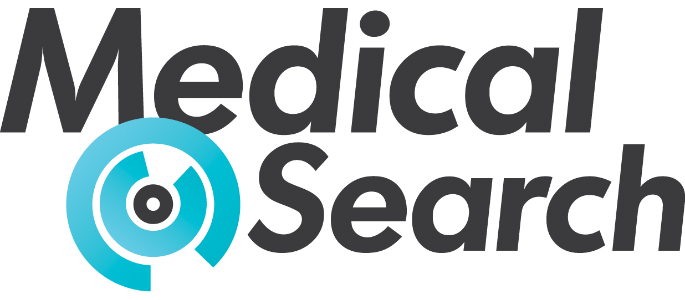




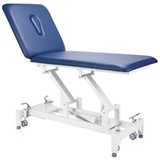








-160x160-state_article-rel-cat.png)

